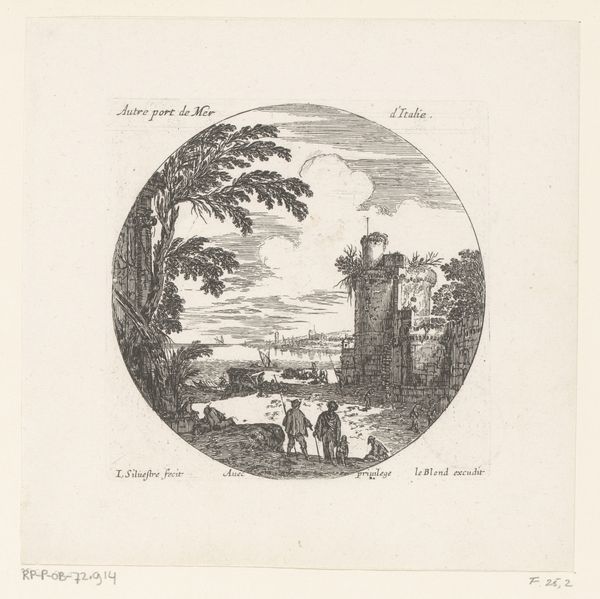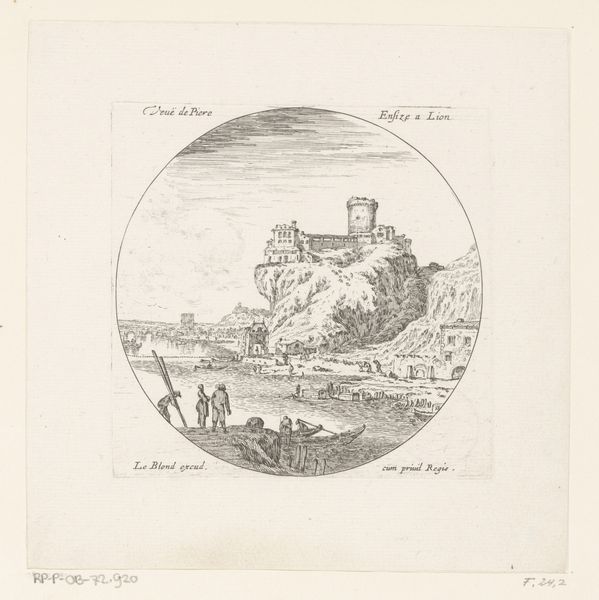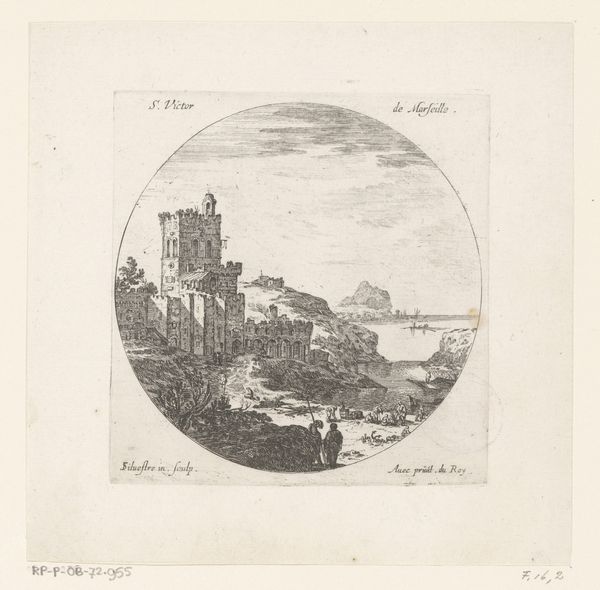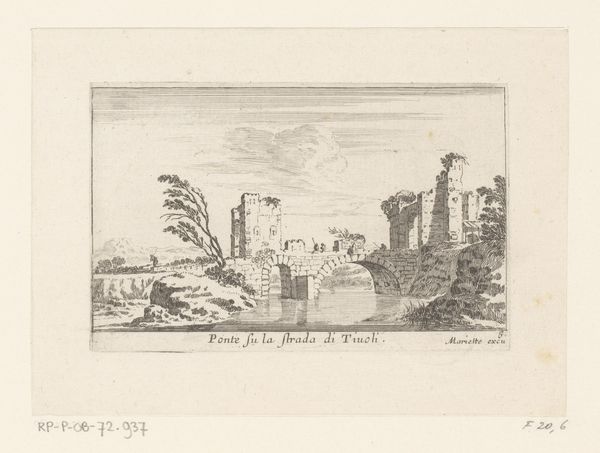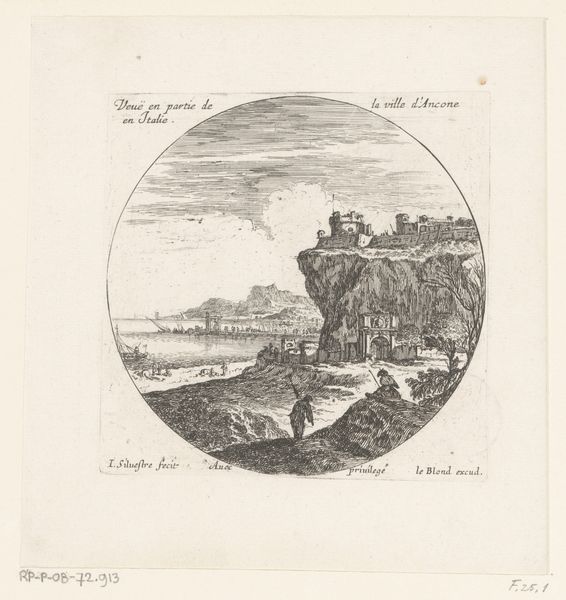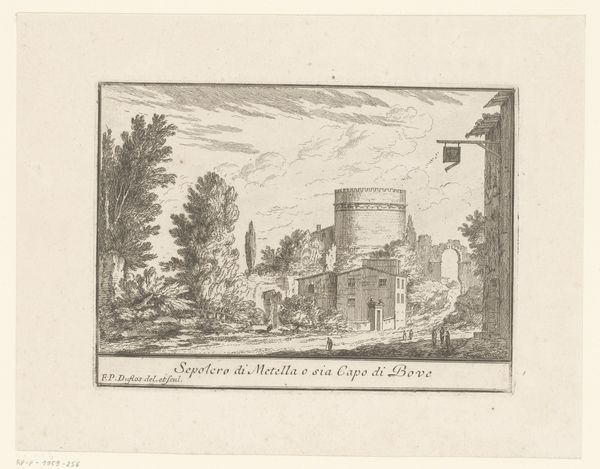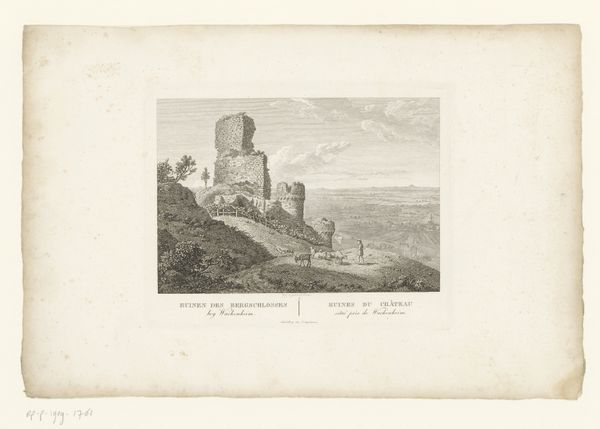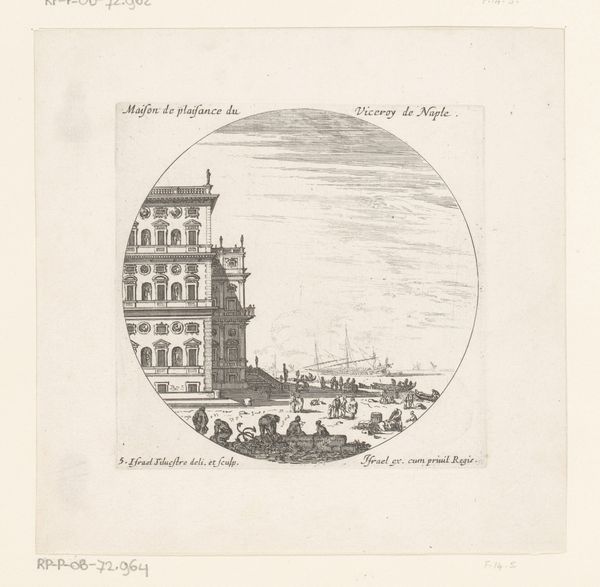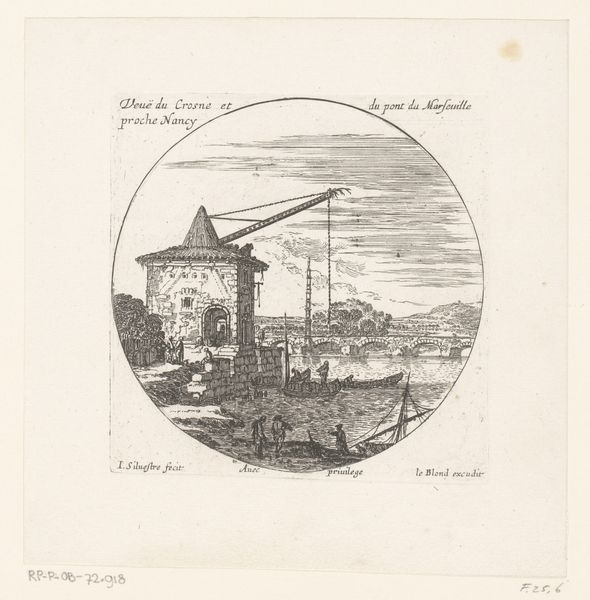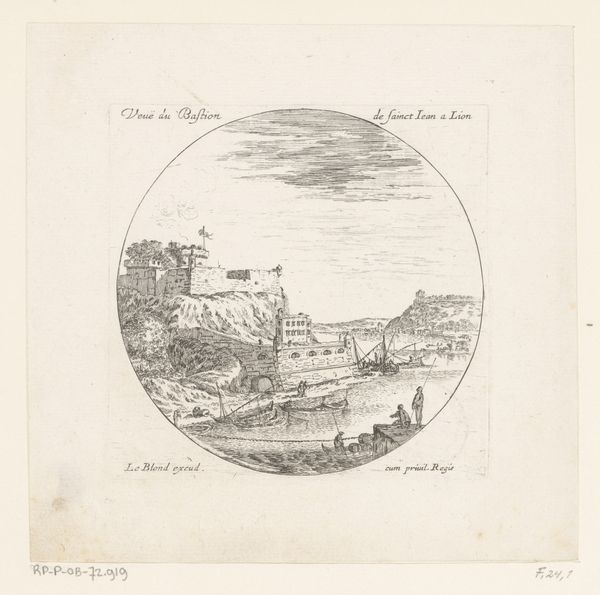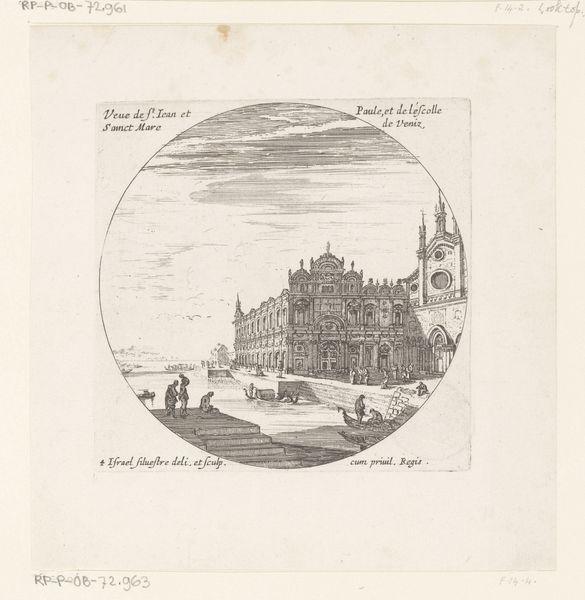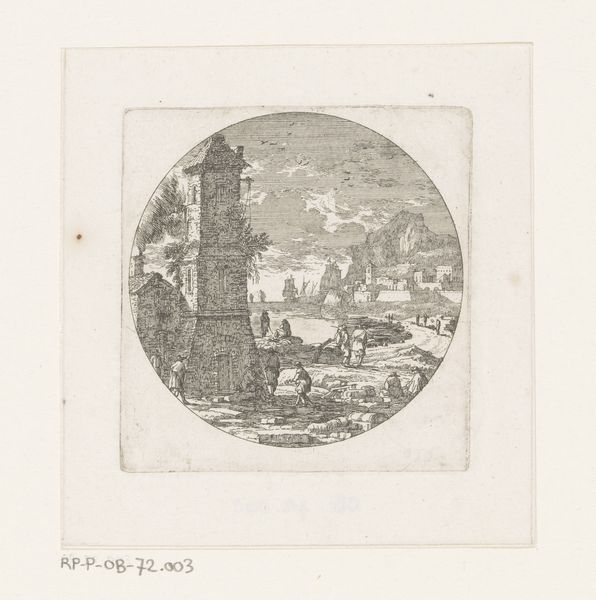
print, etching
#
baroque
# print
#
etching
#
landscape
#
cityscape
Dimensions: height 119 mm, width 118 mm
Copyright: Rijks Museum: Open Domain
Editor: Here we have Israel Silvestre's "View of the Gate and Port of Marseille," an etching from 1647. The composition is striking, contained within a circle. It’s quite a stately, almost proud depiction of the city’s entrance. What do you see when you look at this print? Curator: I see a potent assertion of power and control. Consider the historical context. Silvestre created this image during a period of significant social and political upheaval in France. The port of Marseille was a vital artery for trade and military strength. Editor: So, the print is about more than just the literal view? Curator: Absolutely. Notice how the gate dominates the scene, framed by cannons in the foreground. It speaks volumes about the anxieties and priorities of the time—security, defense, projecting dominance. But I also wonder, who was this power serving? The etching perhaps glorifies the ruling elite while obscuring the lives and struggles of ordinary people dependent on that port, those not represented within the circle. Editor: That makes me think about whose stories are being told in art, and who gets left out. Curator: Precisely. And how these visual narratives reinforce specific power structures. Look at the placement of figures – almost dwarfed. Doesn't this prioritization reveal a specific ideological perspective? Editor: I do see what you mean now. So the print, beyond its aesthetic qualities, is really a loaded political statement? Curator: It offers a window into the socio-political climate of 17th century France and, in its subtle propagandizing, demands we consider what – and who – isn’t shown. Editor: This has really shifted my understanding; it’s not just a landscape but a declaration of power. I will definitely view similar prints differently in the future!
Comments
No comments
Be the first to comment and join the conversation on the ultimate creative platform.
